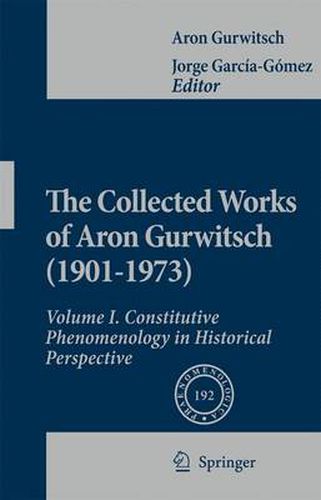Readings Newsletter
Become a Readings Member to make your shopping experience even easier.
Sign in or sign up for free!
You’re not far away from qualifying for FREE standard shipping within Australia
You’ve qualified for FREE standard shipping within Australia
The cart is loading…






This title is printed to order. This book may have been self-published. If so, we cannot guarantee the quality of the content. In the main most books will have gone through the editing process however some may not. We therefore suggest that you be aware of this before ordering this book. If in doubt check either the author or publisher’s details as we are unable to accept any returns unless they are faulty. Please contact us if you have any questions.
1 The present volume is rich in essential phenomenological descriptions 2 and insightful historico-critical analyses, some of which cannot be fully appreciated, however, except by close examination on the part of the reader. Accordingly, such a task ought to be left to the consideration and judgment of the latter, save where such discussions are directly relevant to the topics I will be dwelling upon. I prefer, then, to approach the matters and questions contained here otherwise, namely, archeologically. In this I 3 follow Jose Huertas-Jourda, the editor of the corresponding French vol- 4 ume, in his felicitous terminological choice, although I adopt it here for my purposes in an etymological sense, i. e. , as signifying a return to prin- 5 ciples or origins. This, after all, is consistent not only with the spirit and practice of phenomenology, as acknowledged by Aron Gurwitsch often enough, but as well with what he has actually said, to wit: it is a qu- tion of 1 Cf. , e. g. , infra,in An Outline of Constitutive Phenomenology, Chapter 4, pp. 185 ff. (Henceforth I shall refer to this book as Outline. ) This essay will be devoted to the study of selected parts of the contents of this volume, although, when necessary, use will be made here of other works by various authors, including Gurwitsch. 2 Cf. , e. g. , ibid. , Chapter 3, pp. 107 ff.
$9.00 standard shipping within Australia
FREE standard shipping within Australia for orders over $100.00
Express & International shipping calculated at checkout
This title is printed to order. This book may have been self-published. If so, we cannot guarantee the quality of the content. In the main most books will have gone through the editing process however some may not. We therefore suggest that you be aware of this before ordering this book. If in doubt check either the author or publisher’s details as we are unable to accept any returns unless they are faulty. Please contact us if you have any questions.
1 The present volume is rich in essential phenomenological descriptions 2 and insightful historico-critical analyses, some of which cannot be fully appreciated, however, except by close examination on the part of the reader. Accordingly, such a task ought to be left to the consideration and judgment of the latter, save where such discussions are directly relevant to the topics I will be dwelling upon. I prefer, then, to approach the matters and questions contained here otherwise, namely, archeologically. In this I 3 follow Jose Huertas-Jourda, the editor of the corresponding French vol- 4 ume, in his felicitous terminological choice, although I adopt it here for my purposes in an etymological sense, i. e. , as signifying a return to prin- 5 ciples or origins. This, after all, is consistent not only with the spirit and practice of phenomenology, as acknowledged by Aron Gurwitsch often enough, but as well with what he has actually said, to wit: it is a qu- tion of 1 Cf. , e. g. , infra,in An Outline of Constitutive Phenomenology, Chapter 4, pp. 185 ff. (Henceforth I shall refer to this book as Outline. ) This essay will be devoted to the study of selected parts of the contents of this volume, although, when necessary, use will be made here of other works by various authors, including Gurwitsch. 2 Cf. , e. g. , ibid. , Chapter 3, pp. 107 ff.